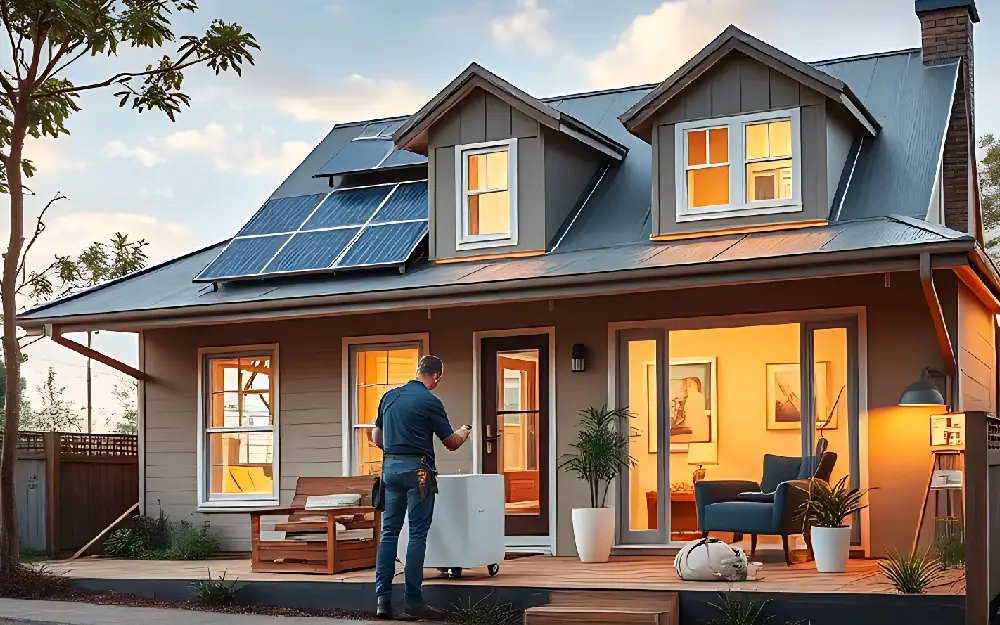
Home Building Innovations for Retrofitting Older Properties for Energy Efficiency
As energy costs continue to rise and environmental concerns grow, homeowners are increasingly turning to innovative solutions to make their homes more energy-efficient. One of the most promising trends in homebuilding and renovation is retrofitting older properties to improve energy performance. Many older homes, while full of character and charm, were built without the modern energy standards we rely on today. Retrofitting these homes with the latest energy-efficient technologies not only helps reduce utility bills but also contributes to a greener, more sustainable future.
In this blog, we’ll explore some of the most cutting-edge home building innovations used to retrofit older properties for energy efficiency, ensuring that these timeless homes are not only functional but also environmentally friendly.
1. Upgrading Insulation for Improved Thermal Efficiency
Older homes often have outdated or insufficient insulation, leading to significant heat loss during the winter and unwanted heat gain during the summer. To address this issue, one of the first steps in retrofitting is improving insulation.
Modern insulation materials, such as spray foam and blown-in cellulose, can fill gaps and cracks that may have been overlooked in the past. These materials offer superior thermal resistance, helping to maintain a comfortable indoor temperature year-round. Additionally, reflective barriers and advanced insulation techniques can be used to insulate attics, walls, and even basements, dramatically reducing heating and cooling costs.
2. Energy-Efficient Windows and Doors
Windows and doors are often the weakest link in an older home’s energy efficiency. Single-pane windows and outdated door seals allow drafts and heat to escape, making it harder to maintain a consistent indoor temperature. Fortunately, energy-efficient windows and doors have come a long way.
Double- or triple-glazed windows, equipped with Low-E (low emissivity) coatings, help to prevent heat from transferring in and out of the home. This not only reduces heating and cooling costs but also helps to create a more comfortable indoor environment. For homeowners with historic properties, there are also options for custom-designed, energy-efficient windows that preserve the aesthetic of the home while improving performance.
Additionally, new doors with enhanced weatherproofing features, such as multi-point locking systems and insulated cores, can significantly improve energy efficiency and security.
3. Smart Thermostats and Energy Management Systems
Technology has made it easier than ever to control and monitor energy use in the home. Smart thermostats, such as Nest or Ecobee, can learn your schedule and adjust heating and cooling settings accordingly, ensuring that energy isn’t wasted when you’re not at home.
These smart systems are particularly beneficial for older homes with outdated heating and cooling systems. By integrating them into your home’s existing HVAC system, you can increase energy efficiency without having to replace the entire system. Some systems also allow you to control the temperature remotely via a smartphone app, giving you more flexibility to optimize energy use.
4. Solar Power Integration
Solar panels are becoming a popular choice for homeowners looking to reduce their carbon footprint and save on energy bills. Even for older homes, retrofitting to include solar power is a smart move. While older homes may not have been designed with solar in mind, solar panels can be added to the roof without compromising the home’s aesthetic or structural integrity.
Modern solar technology is more efficient and aesthetically pleasing than ever before, with sleek, low-profile panels that blend seamlessly into a home’s roofline. In addition to solar panels, homeowners can also consider installing solar water heaters, which provide an energy-efficient way to heat water without relying on traditional energy sources.
5. Upgrading HVAC Systems
Many older homes still rely on outdated heating and cooling systems that are inefficient and costly to operate. Retrofitting these systems with modern, energy-efficient alternatives can result in significant savings. Today’s high-efficiency HVAC systems use advanced technology to heat and cool homes more effectively while using less energy.
Options such as ductless mini-split systems, heat pumps, and zoned heating and cooling can offer customizable comfort and reduce energy waste. By upgrading the HVAC system to one that’s better suited for modern living, homeowners can significantly improve their home’s overall energy efficiency.
6. Green Roofing and Cool Roofs
A growing trend in energy-efficient retrofitting is the installation of "cool roofs" or green roofs. Cool roofs are designed to reflect more sunlight and absorb less heat, helping to lower cooling costs in warmer months. These roofs typically feature reflective coatings or materials that improve thermal performance.
In addition to cool roofs, some homeowners are opting for green roofs, which are covered with vegetation. Green roofs not only improve insulation but also help with stormwater management and can provide additional green space in urban environments. Though more common in newer buildings, these innovations are making their way into retrofitting projects for older homes.
7. Smart Lighting and Appliances
Upgrading lighting and appliances is another essential component of retrofitting an older home for energy efficiency. LED bulbs, which use significantly less energy than traditional incandescent bulbs, can be installed throughout the home to reduce lighting costs.
In addition, replacing old, energy-draining appliances with ENERGY STAR-rated models can have a significant impact on energy consumption. Modern appliances like refrigerators, washers, and dishwashers use less water and energy, helping to lower utility bills over time.
Conclusion
Retrofitting older properties for energy efficiency is a smart investment that benefits both homeowners and the environment. From improving insulation and installing energy-efficient windows to integrating smart technology and solar power, the innovations available today make it easier than ever to enhance the sustainability of older homes without sacrificing comfort or style.
As energy efficiency becomes increasingly important, retrofitting older properties not only increases a home's value but also contributes to a greener future. By embracing these building innovations, homeowners can ensure that their older homes are well-equipped to handle the challenges of the modern world, all while saving money and reducing their environmental impact.


